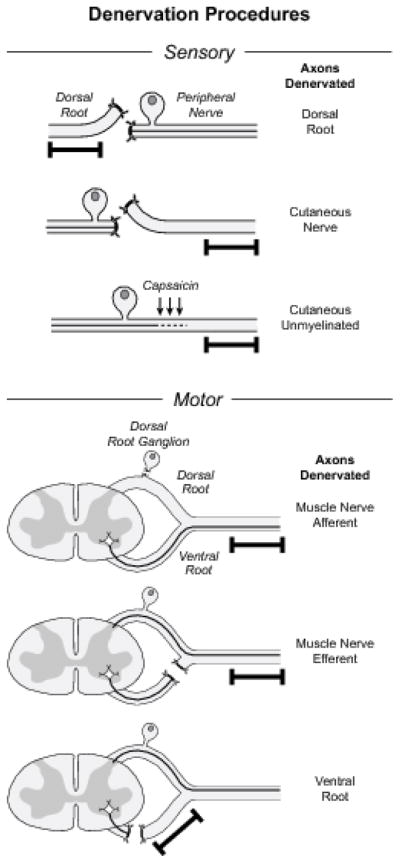Figure 1.

Procedures used to denervate specific Schwann cell populations for PCR analysis in these experiments. The segment of nerve removed for study is indicated by the black bar. The cutaneous branch of the rat femoral nerve was denervated by proximal ligation and interruption of the femoral nerve trunk. Exposure of dorsal roots, DRGs, and ventral root fibers contributing to the femoral nerve was accomplished through unilateral laminectomies at the L2, L3, and L4 levels. Dorsal root was denervated by interrupting it just proximal to the ganglia, afferents in the femoral muscle branch by excising the exposed DRGs, and efferents in the femoral muscle branch by interrupting the ventral root while preserving the dorsal root and DRG. Although the dorsal and ventral roots are shown as separate structures for diagrammatic clarity, the dorsal root ganglion is actually adherent to the ventral root beneath it. Great care is thus required to excise the DRG without injuring the ventral root. Survival of ventral root axons after this preparation has been confirmed in a previous publication from our laboratory (Redett et al., 2005). Ventral root denervation required more proximal laminectomies to expose and interrupt the ventral roots as they exited the spinal cord. Cutaneous unmyelinated axons were denervated by direct application of capsaicin to the femoral nerve.
